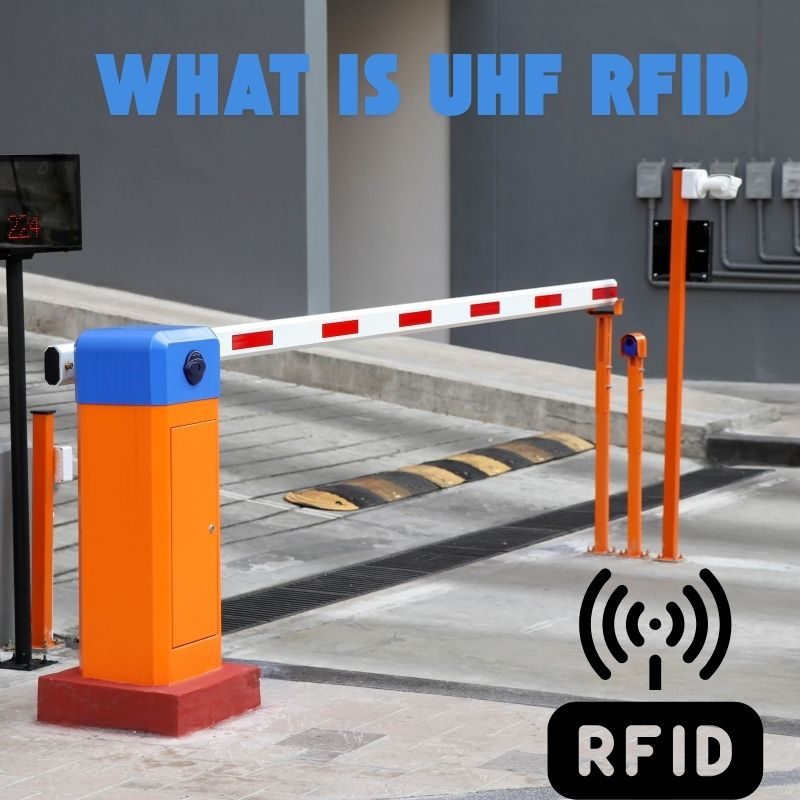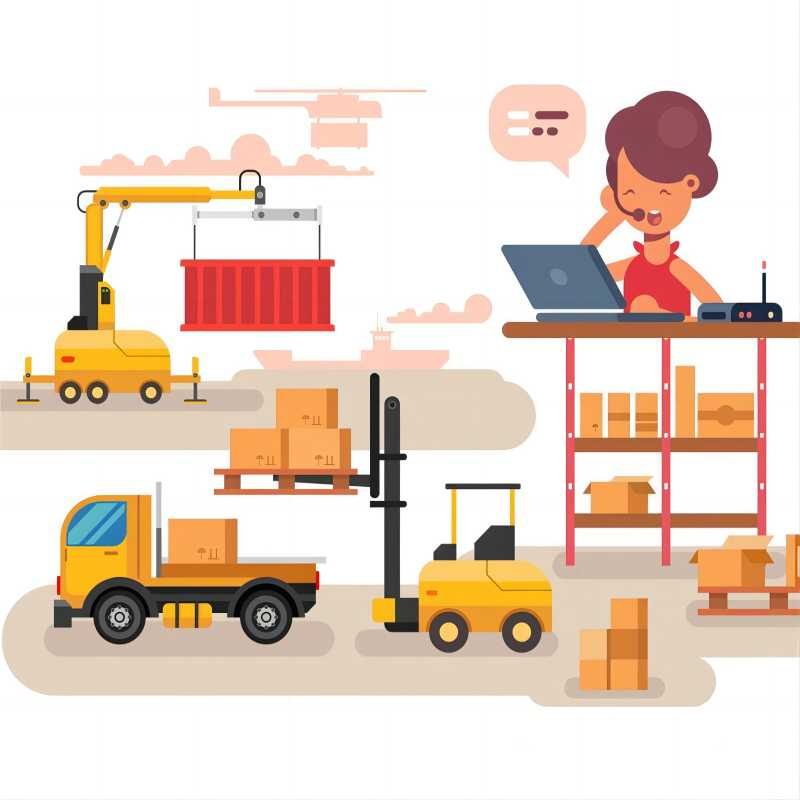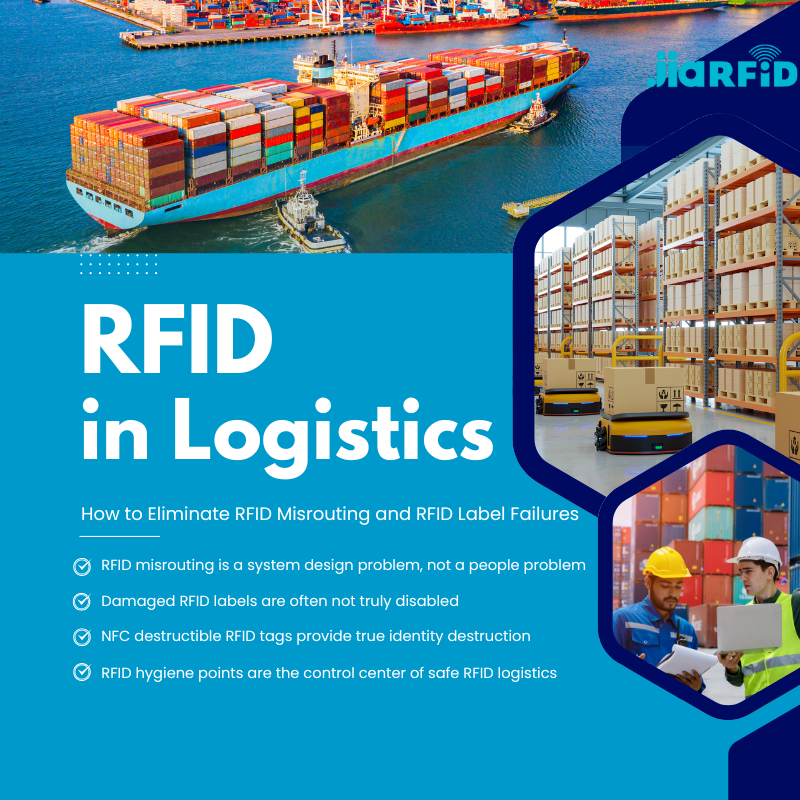
Vad är UHF RFID?
Innehållsförteckning
Introduktion
UHF RFID (Ultra-High Frequency Radio Frequency Identification) är en banbrytande identifieringsteknik som vinner mark inom olika branscher. Från detaljhandel och logistik till hälso- och sjukvård och jordbruk – dess förmåga att möjliggöra snabb, kontaktlös datautbyte förändrar hur företag bedriver sin verksamhet.
Oavsett om du utforskar RFID för första gången eller vill fördjupa dina kunskaper, kommer denna guide att guida dig genom vad UHF RFID hur det fungerar, dess tillämpningar och varför det är en teknik man måste känna till 2025.

Vad är UHF RFID?
UHF RFID, en förkortning av Ultra-High Frequency Radio Frequency Identification, är en trådlös kommunikationsteknik som använder radiovågor för att identifiera och spåra taggar som är fästa på objekt. Det är en av de tre huvudsakliga frekvenskategorierna inom RFID-tekniken – de andra två är lågfrekvens (LF) och högfrekvens (HF).
UHF fungerar vanligtvis inom intervallet 860 MHz till 960 MHz och är välkänt för:
- Längre läsavstånd (upp till 12 meter eller mer)
- Snabbare dataöverföring
- Möjlighet till massläsning
Enkelt uttryckt är UHF RFID som en digital “streckkod på steroider” – ingen siktlinje behövs och hundratals artiklar kan läsas av samtidigt.
Hur fungerar UHF RFID?
För att förstå hur UHF RFID fungerar, låt oss titta på dess kärnkomponenter:
- RFID-taggar: Innehåller ett mikrochip och en antenn som lagrar data.
- RFID-läsare: Sänder ut radiovågor och tar emot data från taggar.
- Antenner: Förstärk signalen mellan taggar och läsare.
- Mellanprogramvara/programvara: Bearbetar och hanterar insamlade data.
Det finns två huvudtyper av UHF RFID-taggar:
- Passiva UHF-taggar: Förlitar sig på energi från läsarens signal; billigare och vanligt förekommande.
- Aktiva UHF-taggar: Batteridriven; lämplig för långdistans- och realtidsapplikationer.
Viktigaste funktioner:
- Läsaren sänder ut en signal i UHF-bandet.
- Taggen tar emot energi, slås på och skickar tillbaka sina data.
- Läsaren samlar in dessa data och skickar dem till ett backend-system för bearbetning.
Systemet kan läsa flera taggar samtidigt, även vid höga hastigheter, vilket gör UHF RFID idealiskt för dynamiska miljöer som transportband eller snabbrörligt lager.
Fördelar med UHF RFID-teknik
Varför blir UHF RFID allt populärare? För att det löser verkliga utmaningar inom spårning och automatisering. Här är de främsta fördelarna:
- Långt läsavstånd: Upp till 12 meter, även i tuffa miljöer
- Massläsning: Läs hundratals taggar på några sekunder
- Kostnadseffektivt: Passiva taggar är prisvärda för storskalig användning
- Synlighet i realtid: Omedelbara uppdateringar om lager och tillgångsrörelser
- Icke-siktlinje: Inget behov av att skanna direkt som med streckkoder
- Skalbarhet: Lämplig för små verksamheter eller globala leveranskedjor
Kort sagt ökar det effektiviteten, noggrannheten och automatiseringen – viktiga pelare för moderna företag.
Vanliga tillämpningar av UHF RFID
UHF RFID har blivit en central teknik i moderna automatiserings- och spårningssystem, med exceptionell räckvidd, hastighet och mångsidighet. Dess förmåga att läsa hundratals taggar samtidigt och på långa avstånd gör den ovärderlig inom en rad olika branscher.
Detaljhandel
- Lagerkontroll
- Stöldskyddssystem
- Automatisk utcheckning
- Lageruppdateringar i realtid
Logistik & Supply Chain
- Spårning av försändelser
- Pallhantering
- Cross-docking-verksamhet
- Leveransbevis
Tillverkning
- Spårning av pågående arbete (WIP)
- Kvalitetskontroll
- Utrustningsövervakning
Sjukvård
- Patientarmband
- Spårning av utrustning
- Läkemedelslager
Lantbruk
- Övervakning av boskap
- Spårning av lantbruksutrustning
- Smarta bevattningssystem
Bibliotek & utbildning
- Bokspårning
- Laboratorieutrustningshantering
- Tillträdeskontroll
Oavsett bransch erbjuder UHF RFID realtidsöverblick, effektivitet och spårbarhet.
UHF RFID jämfört med HF och LF RFID – viktiga skillnader
| Särdrag | LF (låg frekvens) | HF (hög frekvens) | UHF (Ultra-High Frequency) |
|---|---|---|---|
| Frekvens | 125-134 kHz | 13,56 MHz | 860-960 MHz |
| Läs Range | ~10 cm | ~1 m | Upp till 12 m |
| Datahastighet | Långsam | Måttlig | Snabb |
| Kosta | Låg | Måttlig | Varierande |
| Användningsfall | Spårning av djur | Kontaktlösa betalningar | Leveranskedja, detaljhandel, logistik |
UHF RFID erbjuder den längsta läsräckvidden och snabbaste prestandan, vilket gör den idealisk för snabba miljöer och spårning av stora volymer.
UHF RFID-standarder och föreskrifter
Standarder reglerar den globala användningen av UHF RFID för att säkerställa kompatibilitet:
- EPCglobal Gen2 / ISO 18000-6C: Branschstandard för passiv UHF RFID
- FCC (USA): Fungerar i 902–928 MHz
- ETSI (Europa): Fungerar i 865–868 MHz
- Andra regioner: Kan variera något beroende på telekomregleringar
Det är viktigt att säkerställa efterlevnad av regionala frekvensbestämmelser vid global användning av UHF RFID.
Typer av UHF RFID-taggar
Passiva UHF RFID-taggar
- Vanligast
- Kostnadseffektivt
- Används inom detaljhandel, logistik etc.
Aktiva UHF RFID-taggar
- Batteridriven
- Längre räckvidd
- Används för spårning av värdefulla tillgångar
Semi-passiva (BAP) taggar
- Batteriassisterad för bättre prestanda
Taggformfaktorer
- Inläggningar
- Etiketter
- Hårda etiketter
- Robusta taggar för metall eller tuffa miljöer
Välj taggtyp utifrån din miljö, räckviddskrav och budget.
Utmaningar och begränsningar med UHF RFID
Som all teknik är UHF RFID inte perfekt. Här är några saker att tänka på:
- Störningar från metall och vätska: Kan blockera eller förvränga signaler
- Miljöfaktorer: Extrema temperaturer kan påverka prestandan
- Begränsningar i siktlinjen: Taggar i täta staplar kan inte läsas på ett tillförlitligt sätt.
- Förskottskostnad: Infrastrukturinstallation kan vara kostsamt
- Dataöverbelastning: Kräver robust programvara för att hantera storskalig datainsamling
Men med noggrann planering kan dessa begränsningar minimeras eller helt undvikas.

Framtida trender inom UHF RFID (2025 och därefter)
UHF RFID är inte bara här för att stanna – den utvecklas snabbt. Trenderna inkluderar:
- Integration med IoT: Smarta sensorer + RFID = kraftfulla datainsikter
- Molnbaserade RFID-system: Hantera taggar var du än befinner dig
- AI och maskininlärning: Prediktiv analys med hjälp av RFID-data
- Smarta städer och infrastruktur: Trafikflöde, avfallshantering och mer
- Industri 4.0: Fabriksautomation i realtid och digitala tvillingar
Med lägre kostnader och bättre prestanda kan man förvänta sig en massiv spridning inom olika branscher före decenniets slut.
Är UHF RFID rätt för dig?
UHF RFID är en kraftfull, skalbar teknik som kan hjälpa ditt företag att minska manuella processer, minska förluster och förbättra synligheten. Oavsett om du hanterar ett lager eller spårar värdefulla medicintekniska produkter är fördelarna med långdistans, höghastighetsdatainsamling banbrytande.
Men precis som med all teknik ligger framgången i att förstå dess styrkor och använda den på rätt sätt.
Är du redo att utforska UHF RFID för ditt företag? Börja med att rådfråga en pålitlig leverantör av RFID-lösningar eller genomföra ett pilotprogram för att utvärdera dina behov.
Vanliga frågor om UHF RFID-teknik
Vad står UHF RFID för?
UHF RFID står för Ultra-High Frequency Radio Frequency Identification (radiofrekvensidentifiering med ultrahög frekvens). Det avser RFID-system som fungerar i frekvensområdet 860–960 MHz och kan läsa taggar på flera meters avstånd.
Hur fungerar UHF RFID?
UHF RFID-system använder radiovågor för kommunikation mellan en läsare och en tagg. Läsaren sänder ut en signal som aktiverar passiva taggar, som sedan skickar tillbaka sina data till läsaren. Detta möjliggör snabb, trådlös identifiering av objekt utan behov av direkt siktlinje.
Vad är räckvidden för ett UHF RFID-system?
UHF RFID-system har vanligtvis en läsräckvidd på 3 till 12 meter (10 till 40 fot) för passiva taggar. Aktiva taggar med batterier kan utöka räckvidden avsevärt, ibland upp till 100 meter eller mer.

Ray Zhou
Den här artikeln skrevs av Ray Zhou, en RFID-teknikexpert med mer än 10 års branscherfarenhet.
Kommentarer
Heta produkter

RFID inom logistik: Hur man eliminerar felaktig dirigering av RFID och fel på RFID-etiketter
RFID inom logistik är mer än bara ett verktyg för att påskynda processer. Det har blivit en viktig del av hur moderna leveranskedjor fungerar.

Vad är RFID-avfallshantering?
Föreställ dig en stad där varje sopkärl talar – inte bokstavligt talat – utan genom ett litet chip som meddelar systemet när det är fullt, när det töms och vart det har tagits. Det är vad RFID-avfallshantering gör idag.

Vad är bultförseglingar och deras användningsområden? | Komplett guide
Inom global handel och logistik spelar bultförseglingar en avgörande roll för att säkerställa godssäkerhet och efterlevnad. Dessa små men kraftfulla enheter är utformade för att låsa fraktcontainrar, släpvagnar och lastdörrar med en manipuleringssäker mekanism.

Vad är ett RFID-kortskydd? Fördelar, användningsfall och köpguide
RFID-teknik (Radio Frequency Identification) finns överallt: i dina kreditkort, ID-brickor, färdbevis, hotellrumsnycklar och mycket mer. Det ger snabbhet och bekvämlighet, men det öppnar också dörren för en ny typ av digital stöld som kallas "skimming". Det är där ett RFID-kortskydd kommer in i bilden.

RFID-armband för evenemang: Guide för storköp för arrangörer
RFID-armband för evenemang håller på att bli lösningen för arrangörer som behöver snabbare inträde, bedrägeribekämpning och kontantlösa betalningar på konserter, festivaler och idrottsarenor. Till skillnad från pappersbiljetter eller QR-koder använder dessa smarta armband inbäddade chips för att effektivisera åtkomst, säkra transaktioner och förbättra gästupplevelsen.

Hur RFID-taggar på vindrutan förbättrar passerkontroll och vägtullsystem för fordon
I dagens snabba värld måste fordonsidentifiering vara snabb, säker och kontaktlös. En RFID-tagg på vindrutan ger exakt det - ett tillförlitligt sätt att hantera vägtullar, parkering och gated access utan att stoppa fordon.
Taggar
RELATERADE BLOGGAR

RFID inom logistik: Hur man eliminerar felaktig dirigering av RFID och fel på RFID-etiketter
RFID inom logistik är mer än bara ett verktyg för att påskynda processer. Det har blivit en viktig del av hur moderna leveranskedjor fungerar.

Vad är RFID-avfallshantering?
Föreställ dig en stad där varje sopkärl talar – inte bokstavligt talat – utan genom ett litet chip som meddelar systemet när det är fullt, när det töms och vart det har tagits. Det är vad RFID-avfallshantering gör idag.

Vad är bultförseglingar och deras användningsområden? | Komplett guide
Inom global handel och logistik spelar bultförseglingar en avgörande roll för att säkerställa godssäkerhet och efterlevnad. Dessa små men kraftfulla enheter är utformade för att låsa fraktcontainrar, släpvagnar och lastdörrar med en manipuleringssäker mekanism.




